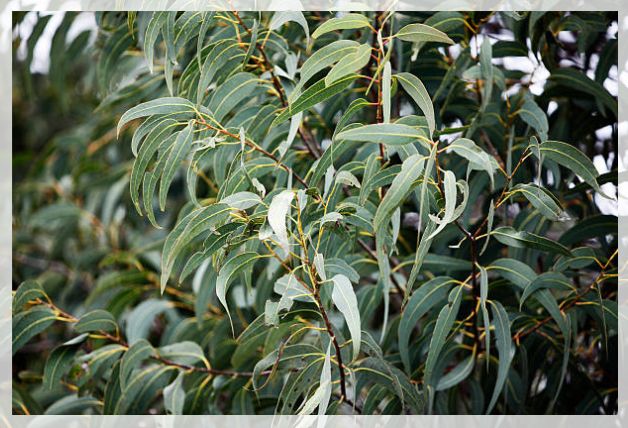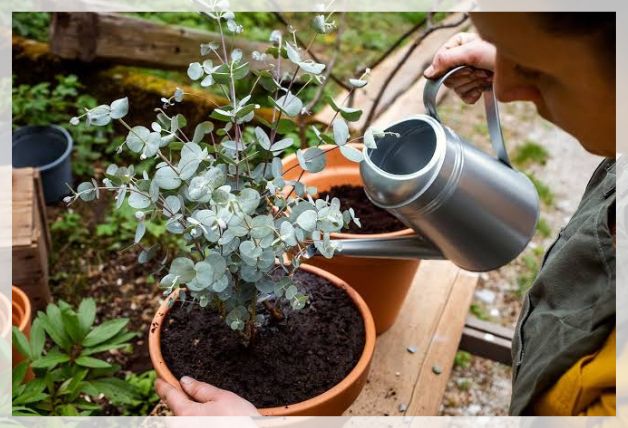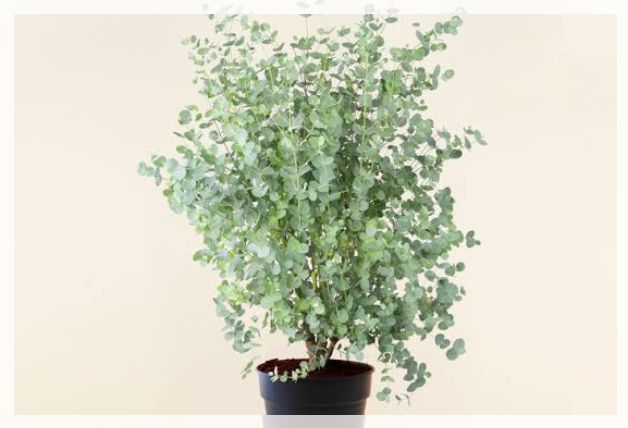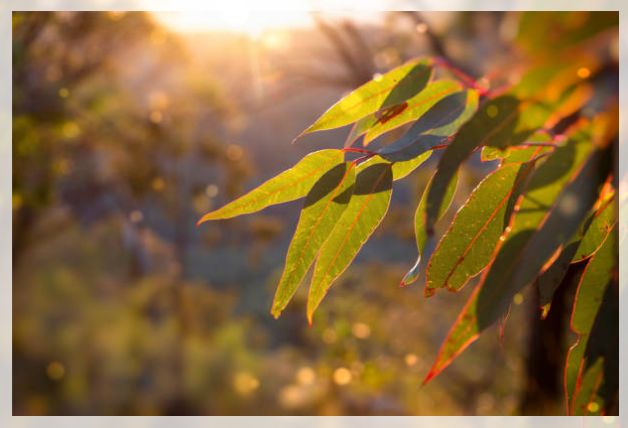Do you know that you can use the Eucalyptus tree for aromatherapy to floral arrangements?
The Eucalyptus tree is often associated with its Native Australian environment and fun-loving koalas feasting on its branches.
There are a number of species of this tree including varieties like the Gum tree and Silver-Dollar Tree.
You can choose to grow them in your home landscape as well.
Moreover, this tree makes an attractive addition with interesting bark and foliage, beautiful flowers, and a nice fragrance.
They tend to thrive well in areas that mimic their native environment.
Most of the trees are fast-growers and reach heights of about 30 to 180 feet or more depending on the variety.
Their approximate 60% growth is established within the first ten years.
Keep on reading.
Eucalyptus Tree
The eucalyptus tree, Eucalyptus cinerea, is an evergreen tree that can grow to about 60 feet high in its natural Australian environment.
However, when you plant them in your home gardeners, they often remain small at around 6 to 10 feet high.
Moreover, it features reddish-brown bark that tends to peel on the smaller branches.
The leaves are a silvery to blue-green color and give off the distinct menthol-like fragrance of the plant when you bruise it.

The best time to plant the eucalyptus plant is in the spring.
They have a fast growth rate growth and grow several feet per year.
It is important to note that the bark, leaves, and sap of this plant are toxic to both humans and pets.
Learn more about Poisonous Plants for Pets here.
Quick Facts about Eucalyptus Tree
Some quick facts about the eucalyptus tree are:
| Common Name | Eucalyptus, silver dollar tree, argyle apple |
| Botanical Name | Eucalyptus cinerea |
| Family | Myrtaceae |
| Plant Type | Tree |
| Size | 6–53 ft. tall, 2–15 ft. wide |
| Sun Exposure | Full |
| Soil Type | Well-drained |
| Soil pH | Acidic, neutral |
| Bloom Time | Summer |
| Flower Color | White, red |
| Hardiness Zones | 8–11 (USDA) |
| Native Area | Australia |
| Toxicity | Toxic to people, toxic to pets |
Eucalyptus Tree Care
When you intend to grow this plant outdoors, make sure to first choose a planting site that gets a lot of sun and has soil will sharp drainage.
Make sure that there are no nearby trees or shrubs that block sunlight from a young eucalyptus plant.
Moreover, make sure that there is enough space to accommodate the full height and spread of the tree.
However, if you are planting multiple eucalyptus trees, make sure to space them at least 8 feet apart.
Other than enjoying its branches, you can also harvest this plant for a number of uses.
Wait until later in the growing season to harvest its mature leaves and branches.
If you just want leaves, you can simply snip them off with pruners or by hand.
Then air-dry them on a paper towel or drying screen in a cool spot out of direct sunlight.
You will need to wait until the leaves are slightly leathery or crispy, and you can then store them in glass jars with tightly sealed lids.
Eucalyptus Tree Care
To grow this tree, keep in mind the following requirements:
Light: This plant tends to thrive best in lots of sunlight.
So make sure to plant your eucalyptus tree somewhere in your landscape that receives at least six hours of direct sunlight daily.
Likewise, when you grow this plant indoors, make sure to keep them indoors near a bright window, preferably one that faces south.
Soil: It is important to note that this tree can tolerate most soil types, however, it will need soil with good drainage.
When growing this in plant containers, use a well-draining potting mix.
Moreover, a slightly acidic to neutral soil pH is best for its growth.
Water: Eucalyptus is somewhat drought tolerant once it establishes itself.

However, it will not like to be left out dry for long periods, and doing so can lead to dropping leaves.
A good rule of thumb is to water when you stick your finger in the soil and feel dryness at your fingertip.
This will amount to watering weekly if you have not had rainfall, especially for container plants.
Temperature and Humidity: It is important to note that this plant prefers warm temperatures between 65 and 75 degrees Fahrenheit roughly.
And it tends to thrive best in moderate humidity levels.
However, it is important to note that this plant cannot survive long exposure to temperatures below 50 degrees Fahrenheit.
So if you are growing this plant in a container, make sure to bring it indoors when you expect a chilly temperature.
Fertilizer: When growing this plant in the ground, it will not need any fertilizer.
However, container plants tend to deplete their nutrients more quickly.
Therefore, make sure to fertilize them with a low-nitrogen houseplant fertilizer throughout the growing season.
It is important to follow label instructions when doing so.
Types of Eucalyptus
Along with Eucalyptus cinerea, there are hundreds of other eucalyptus species.
These include the following:
Popular as Blue gum, Eucalyptus globulus species features smooth bark and is especially adaptable to a variety of growing conditions.

Commonly referred to as cider gum, Eucalyptus gunnii has better cold tolerance than most other eucalyptus species.
Eucalyptus platypus is commonly known as moort and is an especially hardy species that can tolerate heavy soils, cold, and drought.
Pruning and Propagation Tips
In most cases, the eucalyptus tree will not need much pruning.
However, you can prune overgrown, broken, or misshapen branches to keep your plant looking attractive.
The best time to do this is in summer, however, make sure to avoid pruning during very humid weather.
These trees are mostly grown from purchased seeds or nursery plants.
It is important to note that when you grow them as a homegrown tree, they do not flower and produce their own seeds.
Moreover, you can also propagate them via cuttings, though it is not always successful.
However, it is an inexpensive and convenient way to get a new plant, as eucalyptus can be hard to come by at garden centers.
The best time you can take a cutting is when the tree is about 2 to 12 months old, as rooting mature stems is difficult.
Make sure to aim to take your cuttings in the late summer
You can grow eucalyptus from cuttings in the following way:
- prepare a small pot of 3 parts composted tree bark, to 1 part perlite.
- add a slow-release fertilizer following label instructions for the pot size and moisten the growing medium
- then use sterile pruning shears to cut a stem that is about 5 inches long with 4 to 8 leaves
- make sure to cut just above a leaf node
- remove the leaves on the lower half of the cutting
- dip the cut end in a rooting hormone and then plant it in the growing medium up to where the leaves are
- make sure to place the container in bright, indirect light in a room where the temperature is 70 degrees Fahrenheit
- and make sure that the soil remains lightly moist
- roots tend to form in about a month
- at that point, you can then move the new plant to a sunny spot and gradually space out watering
- once the weather is warm enough, you can bring your plant outdoors for progressively longer stretches before planting it in the garden.
Growing Eucalyptus from Seeds
When you intend to grow a eucalyptus tree from seeds, note that you will need to chill the seeds first in the refrigerator for two months before planting.
Sow them in the late winter indoors roughly about 10 to 12 weeks before the last projected frost date in your area.
Make sure to use a seed-starting mix in peat moss that you will be able to plant right in the soil to avoid disturbing the roots.
You will need to sow the seeds on top of the growing medium only lightly covering them.
Then place the pot in a warm spot with indirect bright light.
And keep the growing medium moist but not soggy by misting it.
It is important to note that the seeds with germinate in about 2 to 3 weeks.
Once the seedlings are about 6 inches tall, you can take them outdoors.
Potting Repotting Tips
In most cases, you will be growing eucalyptus trees in containers outside of their hardiness zones.
Growing them in pots will allow you to protect the plant from the cold by bringing them indoors.
However, just like many gardeners, you may treat eucalyptus plants as annuals starting with a new plant each year due to their rapid growth rate.
This tends to allow them to remain manageable as houseplants and on balconies and decks.
Moreover, these plants do not have their roots to be disturbed.
So it is best to start your plant in a large container to avoid having to repot.

A 5-gallon container size is good enough for your plant.
And while unglazed clay is an ideal material that allows excess moisture to evaporate through its walls, you can have a plastic container that is light to move around.
Just make sure that the container you choose has enough holes and use a quality, fast-draining potting mix.
If you are growing a container eucalyptus plant outside of its hardiness zones, you will need to bring it indoors to survive the winter.
Make sure to avoid letting your plant be exposed to frost, which can damage or kill its foliage.
Place your plant near your brightest window, preferably a southern-facing one, for winter.
However, do not fertilize your plant and back off on watering slightly.
Common Pests and Plant Problems
It is important to note that the eucalyptus tree is fairly free of any major pests or disease issues.
However, you may occasionally spot this plant with eucalyptus long-horned borers, especially on stressed plants.
Holes in the bark, oozing sap, and foliage discoloration are signs of infestation.
You can remove the infested area of the plant as soon as possible as insecticides are not effective against borers.
Moreover, this tree is relatively healthy when it is in its preferred environment.
However, in suboptimal conditions, they can come down with certain issues.
Leaves turning Brown: When leaves turn brown on the eucalyptus tree, it can be a sign of too little moisture.
This is likely an issue you can notice when leaves curl up or droop as well.
In such a case, you will need to up your watering to keep the soil lightly moist but not soggy.
Brown leaves can also be a sign of disease, an especially fungal disease.
If just a small area is infected, make sure to remove the portion promptly.
Or treat it with an appropriate fungicide.






Leave a Reply